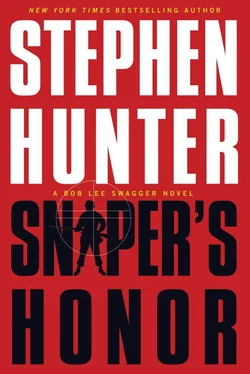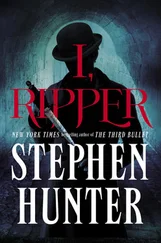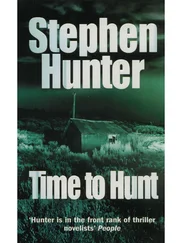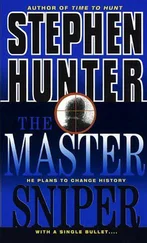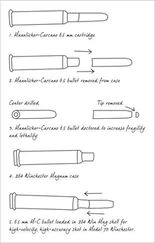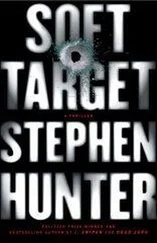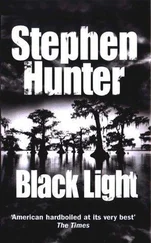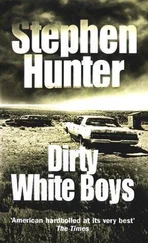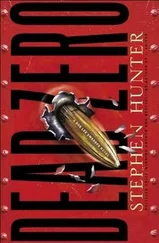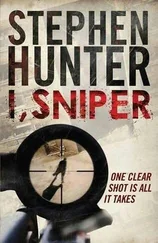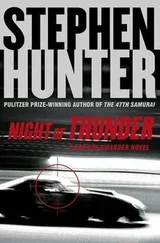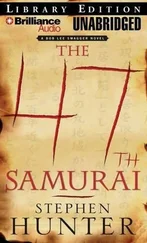He squinted, looking around. “See, it ain’t just that. It’s the land itself. The valley is wide here. She had to be within five hundred yards, and the nearest crests are half a mile to a mile away.”
It was true. The town was situated on a series of valleys that ran along the River Prut, and at this spot, the valley had opened up.
“We don’t know it happened here. We don’t even know it happened, period.”
“She was a sniper. If it happened, she sniped him. Long shot, take the man down. He’s probably guarded, there’s no way she gets close enough to use a tommy gun or a grenade if he’s here. There was an atrocity here on the twenty-eighth, something set it off, there was a sniper in the area, there was an ambush, it all pretty much adds up. Except this place doesn’t add up.”
“And the fact that the Germans recovered her sniper rifle so she didn’t have one makes it even more difficult to understand.”
“I know, I know, but I can only figure out one damn thing at a time. Today I am figuring out where it happened. Maybe tomorrow I figure out where she got the rifle.”
“Okay, how about this: I will feed you stupid questions. So stupid they get you even crankier. Maybe that way, you’ll stumble on a better idea.”
“Go ahead.”
“Okay,” she said. “If it was your shot, how would you do it?”
“I’d be in trees, overlooking. I could infiltrate through forest, find a lane through the leaves, look down, read the wind, build a position against a trunk, take the shot, then exfiltrate under the same tree cover. The Krauts couldn’t get their vehicles up the slope and through the trees, and I’d be gone by the time they climbed up with dog teams to track me.”
“So it’s got to be somewhere else. Somewhere with high hills within five hundred yards, lots of forest cover.”
“Yeah.”
“Okay,” she said. “Follow me.”
They crossed into a souvenir shop—textiles, ceramic figures, photo albums, socks in bright patterns—and Reilly spoke to the lady behind the desk.
After a while, she said to Swagger, “You were right. It’s up the road a bit. By the bridge over the waterfall. That’s where the village was until the Germans burned it down.”
* * *
They stood on the bridge. Fifty yards farther on, the River Prut pounded down a twenty-foot drop, throwing up a mist and creating a pulsing, wet roar. White foam burst from the wet rocks, and tumult ripped across the surface of the Prut where it settled. Ukrainians, in underwear, shorts, and swimsuits, sat on the rocks, enjoying the cooling spray. On either side of this picturesque little spot, at high ground along the banks, entrepreneurs had built more touristy bric-a-brac, a mock village of wooden booths where the usual crap—the same ceramic figures, the same textiles, the same socks, the same photo albums—was hawked at competitive prices. It seemed somewhat blasphemous, as it also marked the site of a massacre, but business was business, and the Ukrainians had a hard head for what was now as opposed to what was then. How much nicer if it had been a fallow field where high ragged grass blew in the breeze, the trees nearby also animated and rustling, their leaves shimmering in the sun, maybe a nice plaque commemorating the spot. But there were plenty of those, and the real estate here was too beautiful for a somber intrusion. Just stalls selling stuff. Stuff, stuff, stuff, the universal stuff. A bluff carpeted in high pines loomed in one direction, but it was really the only elevation within shooting distance, except for, a thousand yards off, a mountainside, itself covered in the pines. It was too far.
He stood, he looked up, down, sideways, front, and back. “She’d shoot from up there,” he said, pointing at the bluff. “He was down here, maybe on this bridge. The bridge would isolate him from his bodyguard. The range is no more than four hundred yards.”
He stood, he looked at the trees on the bluff for a long time. “Okay,” he said, “I’m getting something.”
“I just see trees.”
“Yeah, just trees, but—but look at the colors. Do you see?”
“Uh, green, followed by green, then more green, and finally some green. Is that it?”
“Different tones of green.”
She was silent. After a bit she said, “Yes. It’s like…”
“Go on,” said Swagger.
“What I’m seeing,” she said, “is that the green of these pines across the closest half of the bluff is somehow different. It’s almost like a line, bright one side, dull the other.”
“That’s it. What I’m seeing is that the trees on roughly half the bluff are somehow, uh, lighter. They’re not the dark forest green, they’ve got less density to the color, there’s more light, they seem almost lit up.”
“That’s it. It signifies something. Newer, older, I don’t know, closer to water, in more sun, in more shade, something like that.”
They completed the trek across the bridge, then took some wood-hewn steps down to the water’s edge and drew nearer to the Ukrainians in the water, whose children ran about eagerly, lost in games.
“Does it give you the creeps?”
“Thinking about what happened here, what the Nazis did, yes,” said Reilly. “Otherwise, no. It’s just a place. No signs of anything. Covered, gone, vanished. But your instincts are much better than mine. Maybe you feel something.”
“Let’s not feel. Let’s look. Touch, rub, I don’t know, experience it really up close.”
Swagger bent down. He stuck his fingers into the loam, probed, came up with nothing.
She followed suit. She found nothing.
They continued for half an hour. Nothing.
“Well, maybe I’m full of crap,” said Bob. “Maybe—”
But a child ran by them, trailing a fishtail of shedding water, one hand extended in triumph.
“That kid found something.”
They watched him head to a supine mother and father, pinkening in the sun on a blanket. They walked over, and Reilly spoke to them, discovering that the mother spoke enough Russian to get by.
Reilly handed something to Bob. “She says the children find these things all the time.”
It was black, half of it rusted or otherwise corroded away. Its remaining walls were paper-thin, the whole thing crumbly. But the rimmed head, where the brass was much thicker, was intact, and he turned it to read in the light. “I see a 5, a 17, an S97, and a D, circling the center, separated by segment lines.”
“What does that mean?”
“The water must churn ’em up every so often. German production code. If I knew more, I could tell you the year and the plant. It’s a 7.92-millimeter cartridge casing. A machine-gun shell.”
He thought a second.
“Somebody did a lot of shooting here.”
The Carpathians
Yaremche
JULY 1944
Salid was a moral man. He understood obligation, discipline, obedience to God, cleanliness, hard work, the greater good, the greater cause of Palestine, of Islam, and he used those precepts as his guidelines.
But he hid this behind an armor of diffidence and duty, and what he did appeared undisciplined. It was SS theater conceived to convey the impression of random brutality as a way of encouraging fear and thus cooperation. So while he walked among the ranks of assembled villagers, he pretended arbitrariness while looking for specificity. He required certain indicators.
The first was nasal structure. Was the nose long, thickened, wide of nostril? Did it lead the face? Had it that prowlike profile so familiar from Hans Schweitzer’s chilling invocation on the movie poster for Der ewige Jude ? Was the chin also small, behind the point of the nose? Were the lips thick? What about the skin? Was it sallow, yellowish, perhaps even Asiatic? And the hair, greasy, brushed back, contributing to the general verminlike profile so common in these cases?
Читать дальше
